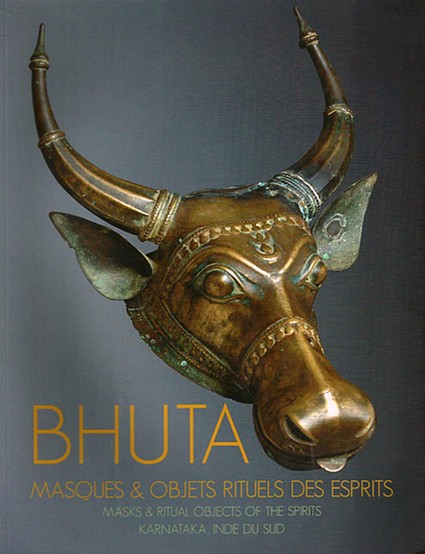Les masques primitifs himalayens recèlent un mystérieux paradoxe: profondément
différents les uns des autres de par leurs formes et matières déclinées à l'infini, ils n'en
demeurent pas moins (presque) toujours identifiables.
Une première approche explicative consiste à reconnaître une provenance himalayenne
par exclusion de toutes les autres. Toutefois, au vu de la diversité du patrimoine mondial,
cette démarche semble vouée à un destin tragique.
La seconde, l'identification d'un style himalayen, paraît donc plus viable, reste encore à
découvrir un lien dans cette multitude d'individualités.
Puisque le chaînon manquant ne réside ni dans la forme ni dans la matière, la partie peut
sembler perdue tant que l'on ne s'est pas penché sur une carte du relief himalayen, cette
figuration d'un agrégat de boîtes d'oeufs retournées!
Ces masques on tous été conçus dans les innombrables creux, les multiples vallées de
cette topographie montagnarde. Des vallées souvent inhospitalières et isolées les unes
des autres par de longues journées de marche.
Un semblant de point commun se dessine donc, il s'agit de l'isolement géographique et,
par conséquence, culturel dans lequel ces masques ont été sculptés, loin de tous canons
esthétiques et religieux. Une multitude de tubes à essai maintenus dans les mêmes
conditions depuis la nuit des temps et dans lesquels on a laissé les sentiments humains
évoluer et s'exprimer au travers de la sculpture.
(On notera que le peu de richesses matérielles dont disposent les populations locales leur
interdit de vaincre ce relief séparateur par un quelconque subterfuge technologique
(télévision, Internet...)).
Les masques primitifs himalayens, primitifs au plus haut point, se reconnaissent à leur
profonde humanité, presque archaïque, exprimée sans filtre d'aucune sorte.
Leur proximité avec leurs homologues en pierre datés du Néolithique et excavés en
l'actuelle Israël est frappante, comme si le temps s'était figé dans les vallées les plus
reculées des Himalayas.
Loin de l'intellect, ces objets sont générateurs d'émotions, ils frappent au coeur avant
même que la pensée n'ait pu monter sa garde.
Ils ont cela de commun avec certaines démarches artistiques contemporaines, qu'ils ne
sont pas liés à un contexte. Ils touchent à l'universel et peuvent donner toute leur mesure
où qu'ils soient exposés.
Parce qu'on en sait encore peu à leur sujet et parce qu'ils sont très peu stéréotypés,
contempler chacun de ces masques primitifs himalayens constitue une rencontre avec
l'inconnu, rencontre souvent bouleversante et menant au désir de faire plus ample
connaissance avec son vis-à-vis.
